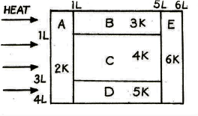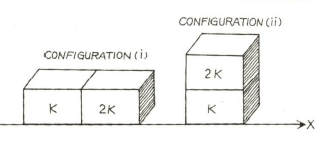G L Mittal and TARUN MITTAL Solutions for Chapter: Thermal Conduction, Exercise 3: FOR DIFFERENT COMPETITIVE EXAMINATIONS
G L Mittal Physics Solutions for Exercise - G L Mittal and TARUN MITTAL Solutions for Chapter: Thermal Conduction, Exercise 3: FOR DIFFERENT COMPETITIVE EXAMINATIONS
Attempt the practice questions on Chapter 24: Thermal Conduction, Exercise 3: FOR DIFFERENT COMPETITIVE EXAMINATIONS with hints and solutions to strengthen your understanding. ISC Physics Class XI Part 1 solutions are prepared by Experienced Embibe Experts.
Questions from G L Mittal and TARUN MITTAL Solutions for Chapter: Thermal Conduction, Exercise 3: FOR DIFFERENT COMPETITIVE EXAMINATIONS with Hints & Solutions
In the steady state, the temperature of a rod:
The rate of heat conduction perpendicular to the surface of a flat plate depends upon:
Which of the following cylindrical rods of the same metal and having same temperature-difference between their ends will conduct heat at the highest rate?
A composite block is made of slabs , , , and of different thermal conductivities (given in terms of a constant ) and sizes (given in terms of length, ) as shown in the figure. All slabs are of same width. Heat flows only from left to right through the blocks. Then, in steady state:

While measuring the thermal conductivity of a liquid, we keep the upper part hot and the lower part cold, because :
It is hotter at the same distance over the top of a fire than it is on the side of it, mainly because :
In which of the following processes, convection of heat does not take place?
Two rectangular blocks, having identical dimensions, can be arranged either in configuration or in configuration , as shown in the figure. One of the blocks has thermal conductivity and the other . The temperature difference between the ends along the axis is the same in both the configurations. It takes to transport a certain amount of heat from the hot end to the cold end in the configuration . The time to transport the same amount of heat in the configuration is:

